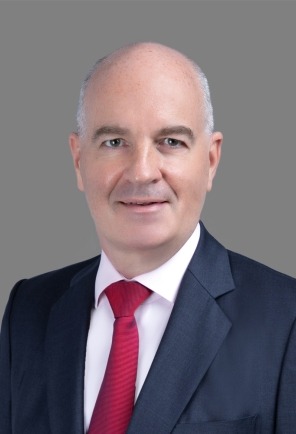The Fraud Element in Corporate Collapses
As businesses face heavy pressures due to the global economic downturn, companies and their stakeholders need to remain vigilant against fraud to avoid financial ruin.
The fraudster stalks the commercial landscape in good times and bad, of course, but severe economic crises not only tempt more business owners/managers to cross the ethical line in the fight for survival but also tend to expose their behaviour. To keep the show on the road, fraudsters depend on liquidity, and it is when it dries up that — adopting Warren Buffett’s arresting imagery — they are revealed to have been swimming without their Speedos.
A Downward Spiral
Financial pressures drive management and business owners to do everything they can to stave off insolvency. “Business owners may have poured their own (and their relatives’) money into the business, borrowed heavily against their equity shares or personally guaranteed bank debt,” observes Eddie Middleton, Managing Director in A&M’s Restructuring and Insolvency practice, “so the company’s poor results could be catastrophic for them personally. Failure can’t be countenanced, and desperation clouds their thinking.” The imperative for external stakeholders, though, peering through the murky fog of the bad behaviour, is to park their outrage (if only temporarily) and zero in on the core business, which in most cases will have sufficient value to make worthwhile the effort required to construct a restructuring, or other recovery exercise.
Financial statement fraud usually starts with just a few fake invoices or a modest inflation of turnover, so that the company’s financials look rosier, according to Chris Fordham, Managing Director in A&M’s Disputes and Investigations practice. “Management may rationalise this as a temporary measure in the hope that the economic situation will improve. But if the company’s performance does not return to ‘normal’ profitability soon, the fraud can spiral out of control,” notes Fordham.
The huge losses from a management fraud scheme can be a knock out blow and this explains why in many such cases, businesses head into financial difficulties and need either to restructure or liquidate. As seen in the cases of Wirecard, Patisserie Valerie and China Metal Recycling, billions of dollars can go missing. According to the Association of Certified Fraud Examiners’ (ACFE’s) Report to Nations 2020, financial statement fraud schemes are the least common but the most costly, occurring in only 10 percent of cases but costing USD 954,000 in median losses, nearly 10 times worse than the median for the most frequent fraud of asset misappropriation.
Exposed to Light
Financial statement fraud often consists of elaborate schemes operated over many years by various stakeholders and key management colluding to hide the true position. Eventually, the bigger fraud schemes get exposed. According to Middleton, “The first distress signals emerge when it is found that company assets have been transferred out of reach of creditors, the earnings are inflated and/or balance sheets are proved not to be as previously stated. The pressure continues to mount as lenders, business partners, regulators and law enforcement all descend on the company demanding answers.”
“Once discovered,” observes Middleton, “the consequences of the fraud will be immediate and can be ruinous.” Suddenly, the company finds itself unable to access credit lines. Apart from any possible criminality, the fraud, once the financial consequences are reflected in the accounts, will likely cause covenant breaches or other defaults in loan agreements. “And, when that happens,” says Middleton, “liquidity suddenly becomes very tight and the company, out of nowhere, is embarked on a fight for survival. That fight typically involves a financial restructuring, either by consensual negotiation or, if that cannot be achieved, through an insolvency process.”
Rebuilding Trust
As Middleton observes, the first casualty of fraud is always trust. “The company is going to have to move mountains to rebuild the trust of all stakeholders, be they investors, lenders, regulators or business partners. With an undercurrent of mistrust, it is much more challenging for all parties to come to the table and agree on anything. For the company, the watchword here is transparency, first in revealing the scale of the problem and then in the conduct of the restructuring process.”
Investors, regulators and creditors will expect the company to undertake a number of steps, including the formation of a special committee, properly empowered and supported by lawyers and forensic accountants, to investigate and reveal the extent of the wrongdoing, and the retention of independent restructuring advisers in whom the aggrieved stakeholders can have confidence. “The independent directors need to take a more prominent role once the fraud has been flagged,” adds Fordham. “They need to take a stand, otherwise they could themselves face the wrath of the regulators. The fraud happened on their watch, and regulators will want to know whether they were asleep at the time and, once the fraud was revealed, whether they leapt into action.”
If the company fails in the attempt to rebuild trust, then creditors may have little option but to take enforcement action, typically through getting a liquidator appointed. The liquidator will then launch an investigation to work out the fraud trail, trace company assets in order to recover them and/or launch litigation claims against those who perpetrated and/or assisted in the fraud. Liquidators displace company directors and come armed with powers of investigation and powers to compel management as well as third parties (auditors, investment bankers and others) to return assets and divulge information.
Businesses and investors need to be prepared, and this includes engaging experts with relevant know-how to assist and advise them in navigating the challenges. Working together, restructuring and insolvency professionals, together with forensic experts, can be the catalyst to achieving an efficient and effective outcome. At Alvarez & Marsal we embrace this philosophy and practice.



